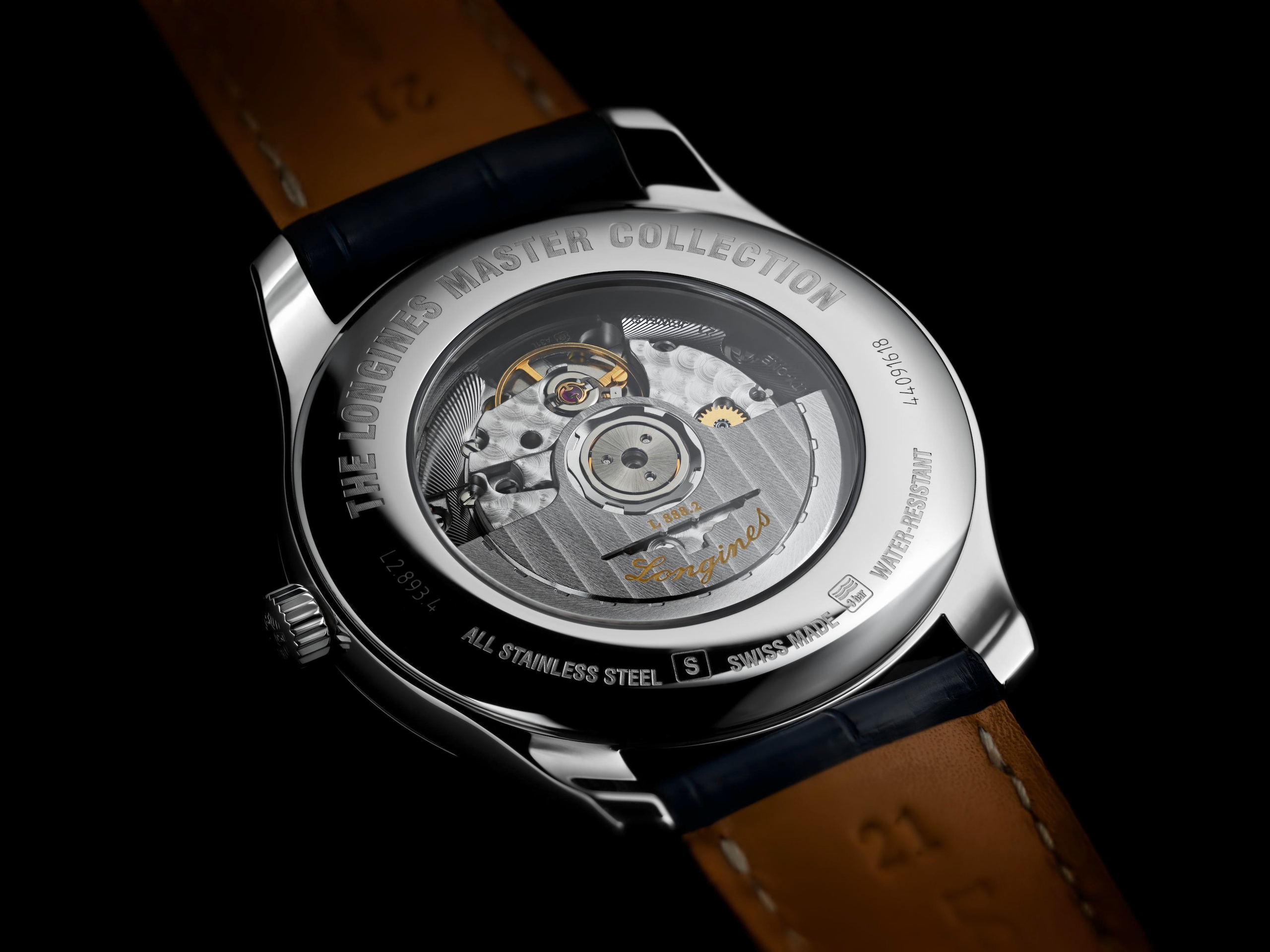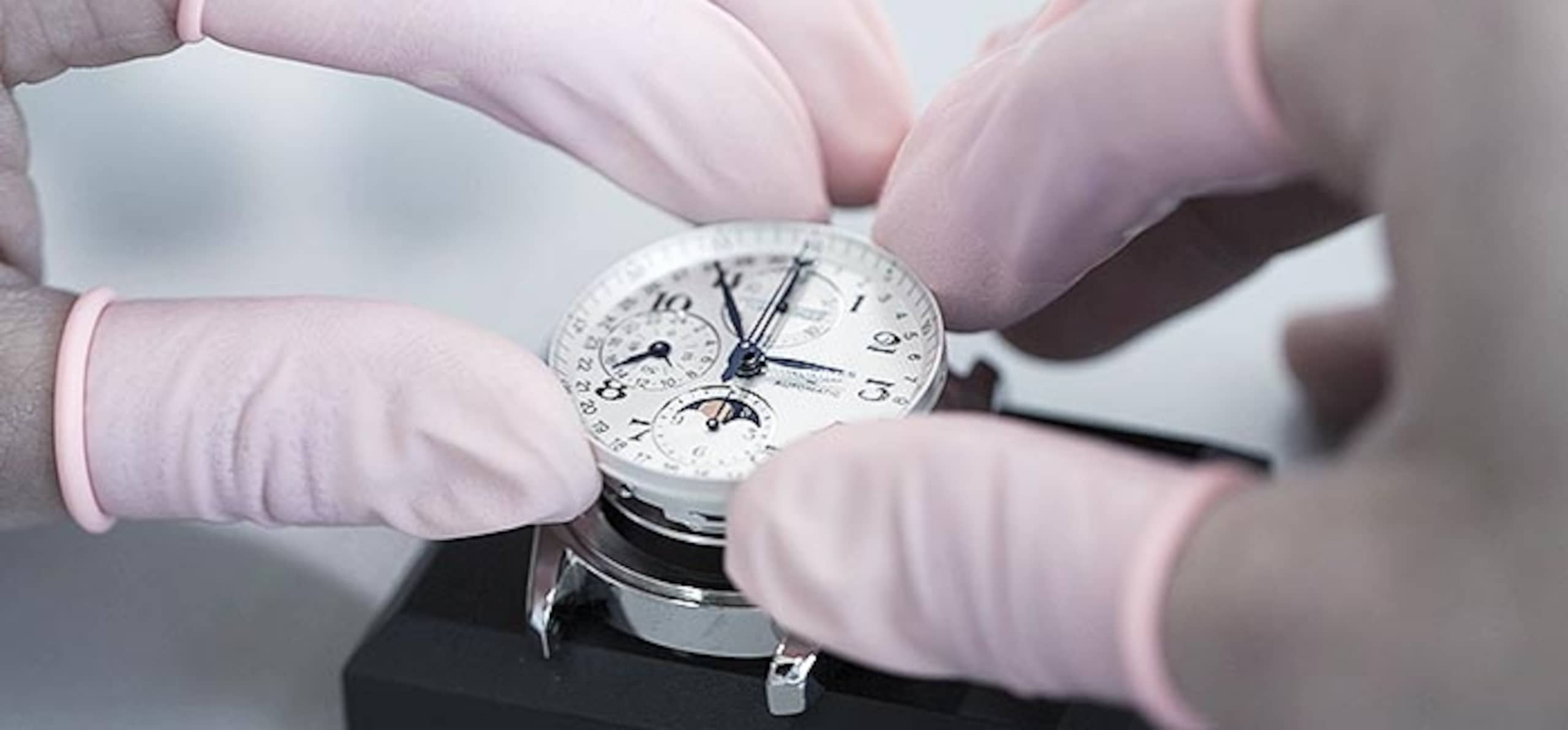
Mechanical Movements
The qualities of mechanical watches and how to preserve them.
WHY DO LONGINES’ WATCHMAKERS INCLUDE WRISTWATCHES FITTED WITH MECHANICAL MOVEMENTS IN THEIR COLLECTIONS?
There is a simple answer: watches fitted with a state-of-the-art hand-wound or self-winding mechanical movements provide the owner with all kinds of satisfaction that no other type of timepiece can match. While more accurate technology can be found – quartz resonators for instance – nothing matches the pure and simple pleasure a mechanical watch brings. Incorporating countless technical improvements, today’s mechanical movements qualify as marvels of inspired ingenuity, born of centuries of fascinating history and the patient workmanship of some of the world’s finest craftsmen. You need only observe a movement’s intricate mechanism and rhythmically moving parts, the beauty and intricacy of its components fashioned out of steel and various complex alloys, to understand that you are looking at a shining example of applied intelligence, brought to life by Nature’s most versatile tool. And what’s more, the hand-wound or self-winding mechanical movements fitted in Longines’ latest timepieces are highly precise. While the precision of a mechanical movement varies depending on the wearer’s habits, the majority of Longines watches have a precision of between -5 and +8 seconds per day, which is more than enough for the demands of everyday life!
WHAT IS A MECHANICAL MOVEMENT MADE OF?
Essentially metal – from the most valuable to the most complex. Although the modern watch’s earliest ancestor, the steeple clock, was made only of iron alloy, today’s wristwatches may contain over a dozen metals, including alloys, making up the hundreds of parts and components. Mostly measuring less than a millimetre thick, made in an incredible variety of shapes and sizes, some even finer than a human hair, the components that make up a watch movement are assembled and adjusted, often simply by friction, with extraordinary skill and painstaking precision. Nevertheless, the more compact the movement and the smaller its parts, the more vulnerable it is to the hazards of everyday life and the more exposed its various components are to daily wear and tear

A LONG AND USEFUL LIFE
Today, a well-designed and well-built mechanical watch movement can run smoothly and well for many generations, assuming of course that it is treated with care and serviced regularly. It should be remembered that when on the wrist, the movement will be regularly exposed to the negative effects of gravity and magnetic fields, the repeated expansion and contraction of metal parts caused by variations in temperature, vibrations and impacts, and of course the gradual deterioration of the movement’s special lubricants, potentially causing friction.
THE SELF-WINDING MECHANISM
By the late 18thcentury, a few exceptionally inventive watchmakers had devised a mechanism that made it possible for a watch movement to wind itself automatically, simply by harnessing the wearer’s body movements.
This marvel of horological ingenuity and expertise in miniature was later adapted to the wristwatch. It works as follows: the normal movements of the arm impel an oscillating weight to swing around its axis. The weight serves to rewind a mainspring which, in every mechanical watch of this type, stores the energy required to keep it running. Automatic winding thus does away with the need to wind the movement manually with the crown every day, as long as the watch is worn regularly.
MANUAL WINDING IF THE WATCH STOPS
A mechanical self-winding movement depends on the movements of the wearer’s arm as its energy source. The watch needs to be worn for a certain amount of time so that it remains fully wound. This time varies, depending on how physically active the wearer is. We cannot therefore give you a precise minimum time the watch should be worn for, but for the majority of people, eight hours is a good guide. If the watch stops, it is preferable to rewind it manually by turning the crown at least forty times. If a watch is not wound sufficiently, this may impair its accuracy.

Discover more articles
View all